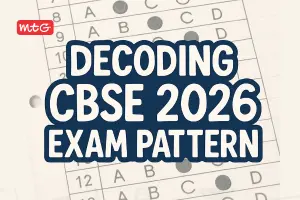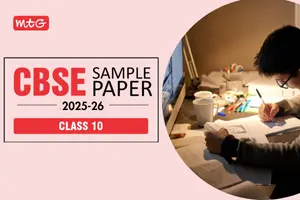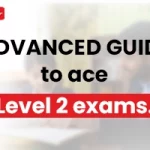Get free CBSE Class 10 Science Chapter 9 Light Reflection and Refraction MCQ Questions with Answers. These MCQ questions are based on the latest exam pattern according to the Class 10 Science syllabus, and can help students assess their preparation level. By solving these MCQ questions, students can quickly review the chapter and improve their subject knowledge. Each question is based on important topics and concepts from the chapter, helping you prepare for the exam and clarify any doubts you may have.
CBSE Class 10 Chapter 9 Light-Reflection and Refraction MCQs
Check below the CBSE Class 10 Science MCQ with answers and Clear your idea of Light-Reflection and Refraction.
Q.1. A ray passing through which part of a lens emerges undeviated ?
(a) Focus
(b) Centre of curvature
(c) Optical centre
(d) Between focus and centre of curvature
Answer
Practice More – CBSE Practice Papers Class 10 (2024) – Free PDF Download
Q.2. The laws of reflection are true for
(a) the plane mirror only
(b) the concave mirror only
(c) the convex mirror only
(d) all reflecting surfaces.
Answer
Q.3. The unit of refractive index is
(a) metre (b) degree
(c) dioptre (d) it has no unit
Answer
(d): Refractive index, µ = c / v
i.e., µ is the ratio of same physical quantities. Therefore, it has no unit.
Also Check – CBSE Sample Papers Class 10 for 2024 Board Exams
Q.4. The amount of light reflected depends upon
(a) the nature of material of the object
(b) the nature of the surface
(c) the smoothness of the surface
(d) all of the above.
Answer
Q.5. To form an image twice the size of the object, using a convex lens of focal length 20 cm, the object distance must be
(a) < 20
(b) > 20
(c) < 20 cm or between 20 cm and 40 cm
(d) cannot say
Answer
Q.6. The focal length of a lens is –0.4 m. The lens is
(a) convex (b) concave
(c) cylindrical (d) none of these
Answer
Q.7. Which of the following statements is true?
(a) A convex lens with power + 4 D has a focal length – 0.40 m.
(b) A convex lens with power – 4 D has a focal length + 0.25 m.
(c) A concave lens with power + 4 D has a focal length – 0.25 m.
(d) A concave lens with power – 4 D has a focal length – 0.25 m.
Answer

Q.8. If f is focal length of the lens, then the power of a lens is equal to
(a) 100 / f (cm)
(b) 10 / f (cm)
(c) 100 / f (m)
(d) 1 / 100 f (cm)
Answer
CBSE Class 10 Resources – Important Formula Book For 10th Science
Q.9. Select the incorrect statement stated below related to concave mirror.
(a) Outer surface is coated with opaque substance.
(b) Inner surface is polished and thus reflective.
(c) It is known as converging mirror.
(d) It is used to observe the phenomenon of refraction.
Answer
Q.10. The focal length of four convex lens P, Q, R and S are 20 cm, 15 cm, 5 cm and 10 cm, respectively. The lens having the greatest power is
(a) P (b) Q
(c) R (d) S
Answer
CBSE Class 10 Science Light – Reflection and Refraction MCQs – PDF Download
Answers-
Summary for NCERT class 10 science chapter 9 – “Light – Reflection and Refraction”
- Light seems to travel in straight lines.
- Mirrors and lenses form images of objects. Images can be either real or virtual, depending on the position of the object.
- The reflecting surfaces, of all types, obey the laws of reflection. The refracting surfaces obey the laws of refraction.
- New Cartesian Sign Conventions are followed for spherical mirrors and lenses.
- Mirror formula, 1/v+1/u = 1/f , gives the relationship between the object-distance (u), image-distance (v), and focal length (f) of a spherical mirror.
- The focal length of a spherical mirror is equal to half its radius of curvature.
- The magnification produced by a spherical mirror is the ratio of the height of the image to the height of the object.
- A light ray travelling obliquely from a denser medium to a rarer medium bends away from the normal. A light ray bends towards the normal when it travels obliquely from a rarer to a denser medium.
- Light travels in vacuum with an enormous speed of 3×108 ms-1. The speed of light is different in different media.
- The refractive index of a transparent medium is the ratio of the speed of light in vacuum to that in the medium.
- In case of a rectangular glass slab, the refraction takes place at both air-glass interface and glass-air interface. The emergent ray is parallel to the direction of incident ray.
- Lens formula, 1/v-1/u = 1/f, gives the relationship between the object-distance (u), image-distance (v), and the focal length (f) of a spherical lens.
- Power of a lens is the reciprocal of its focal length. The SI unit of power of a lens is dioptre.
Best Reference Books for Class 10 Science
- NCERT Textbook + Exemplar Problems-Solutions
- Foundation Course Physics, Chemistry and Biology
- NCERT at your Fingertips Science
- 100 Percent Science
- CBSE 10 Years Chapterwise Topicwise Solved Papers AKA CBSE Champion
- CBSE Chapterwise Question Bank
- CBSE Score More 15 Sample Question Papers
We hope the MCQs for the CBSE Class 10 Science Chapter 9 on Light-Reflection and Refraction are helpful for your board exam preparation, To practice more you can always rely on MTG CBSE class 10 Books for success in your class 10 exams.
Keep learning and stay updated with us for more CBSE exam updates.






























